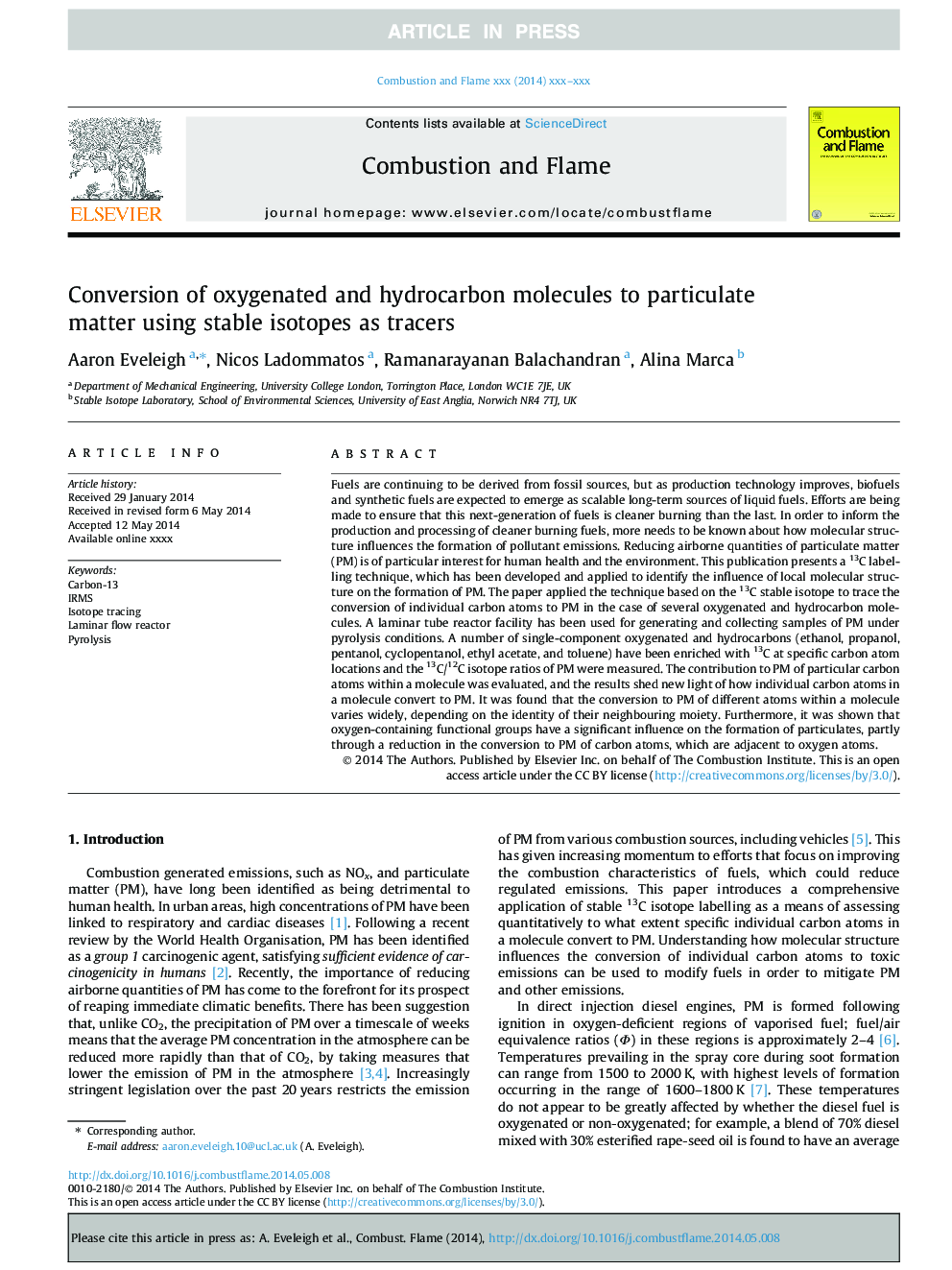| کد مقاله | کد نشریه | سال انتشار | مقاله انگلیسی | نسخه تمام متن |
|---|---|---|---|---|
| 10264348 | 457765 | 2014 | 9 صفحه PDF | دانلود رایگان |
عنوان انگلیسی مقاله ISI
Conversion of oxygenated and hydrocarbon molecules to particulate matter using stable isotopes as tracers
ترجمه فارسی عنوان
تبدیل مولکول های اکسیژن و هیدروکربن به ذرات با استفاده از ایزوتوپ های پایدار به عنوان ردیاب
دانلود مقاله + سفارش ترجمه
دانلود مقاله ISI انگلیسی
رایگان برای ایرانیان
کلمات کلیدی
موضوعات مرتبط
مهندسی و علوم پایه
مهندسی شیمی
مهندسی شیمی (عمومی)
چکیده انگلیسی
Fuels are continuing to be derived from fossil sources, but as production technology improves, biofuels and synthetic fuels are expected to emerge as scalable long-term sources of liquid fuels. Efforts are being made to ensure that this next-generation of fuels is cleaner burning than the last. In order to inform the production and processing of cleaner burning fuels, more needs to be known about how molecular structure influences the formation of pollutant emissions. Reducing airborne quantities of particulate matter (PM) is of particular interest for human health and the environment. This publication presents a 13C labelling technique, which has been developed and applied to identify the influence of local molecular structure on the formation of PM. The paper applied the technique based on the 13C stable isotope to trace the conversion of individual carbon atoms to PM in the case of several oxygenated and hydrocarbon molecules. A laminar tube reactor facility has been used for generating and collecting samples of PM under pyrolysis conditions. A number of single-component oxygenated and hydrocarbons (ethanol, propanol, pentanol, cyclopentanol, ethyl acetate, and toluene) have been enriched with 13C at specific carbon atom locations and the 13C/12C isotope ratios of PM were measured. The contribution to PM of particular carbon atoms within a molecule was evaluated, and the results shed new light of how individual carbon atoms in a molecule convert to PM. It was found that the conversion to PM of different atoms within a molecule varies widely, depending on the identity of their neighbouring moiety. Furthermore, it was shown that oxygen-containing functional groups have a significant influence on the formation of particulates, partly through a reduction in the conversion to PM of carbon atoms, which are adjacent to oxygen atoms.
ناشر
Database: Elsevier - ScienceDirect (ساینس دایرکت)
Journal: Combustion and Flame - Volume 161, Issue 11, November 2014, Pages 2966-2974
Journal: Combustion and Flame - Volume 161, Issue 11, November 2014, Pages 2966-2974
نویسندگان
Aaron Eveleigh, Nicos Ladommatos, Ramanarayanan Balachandran, Alina Marca,
